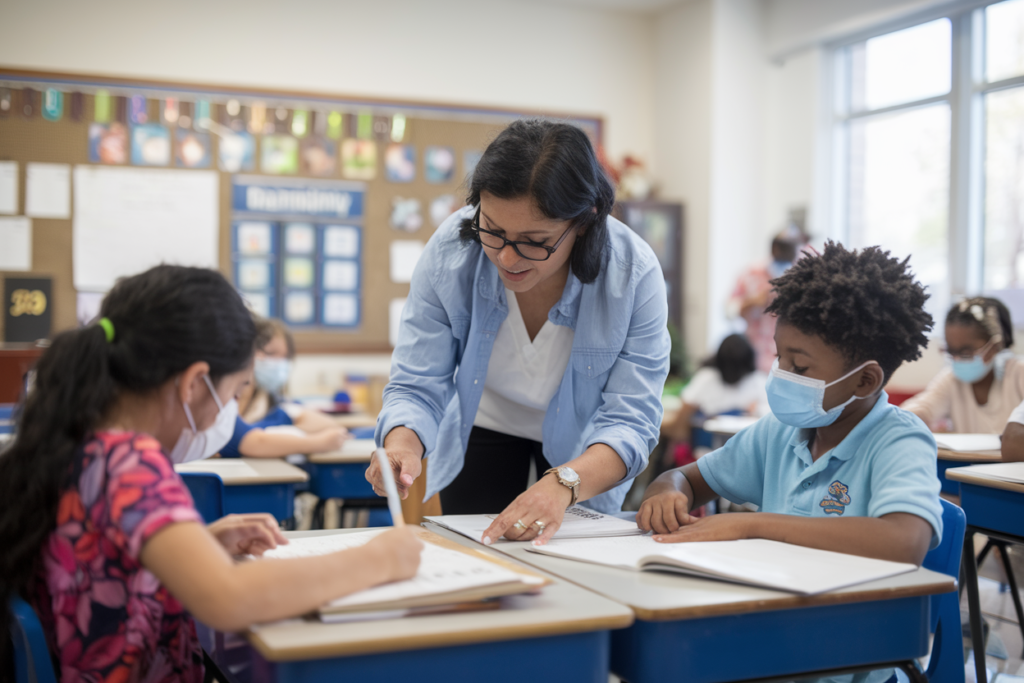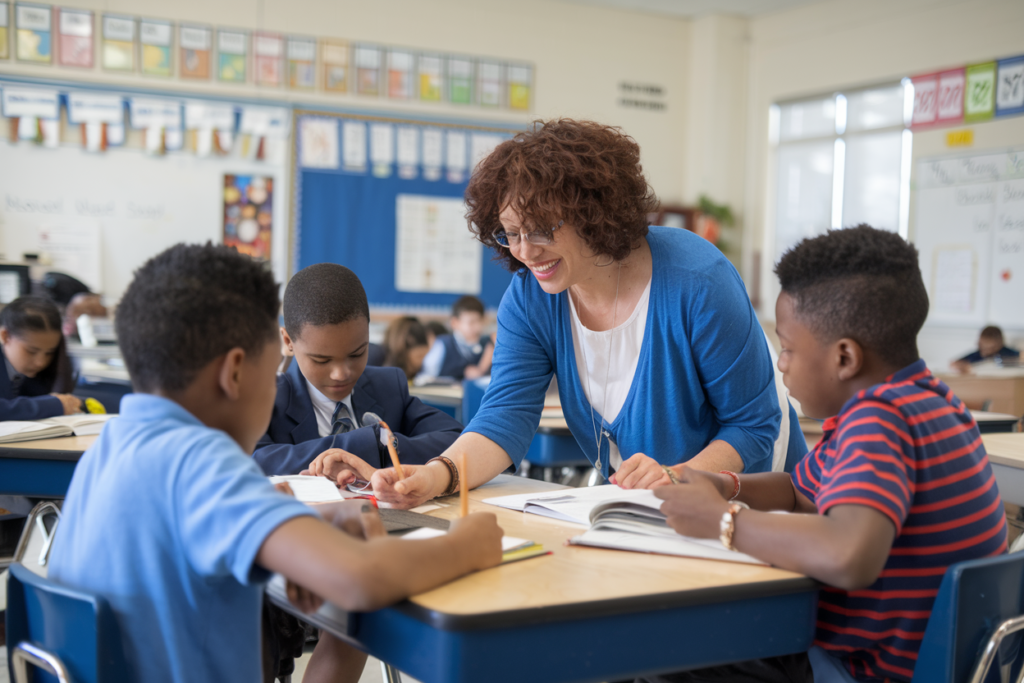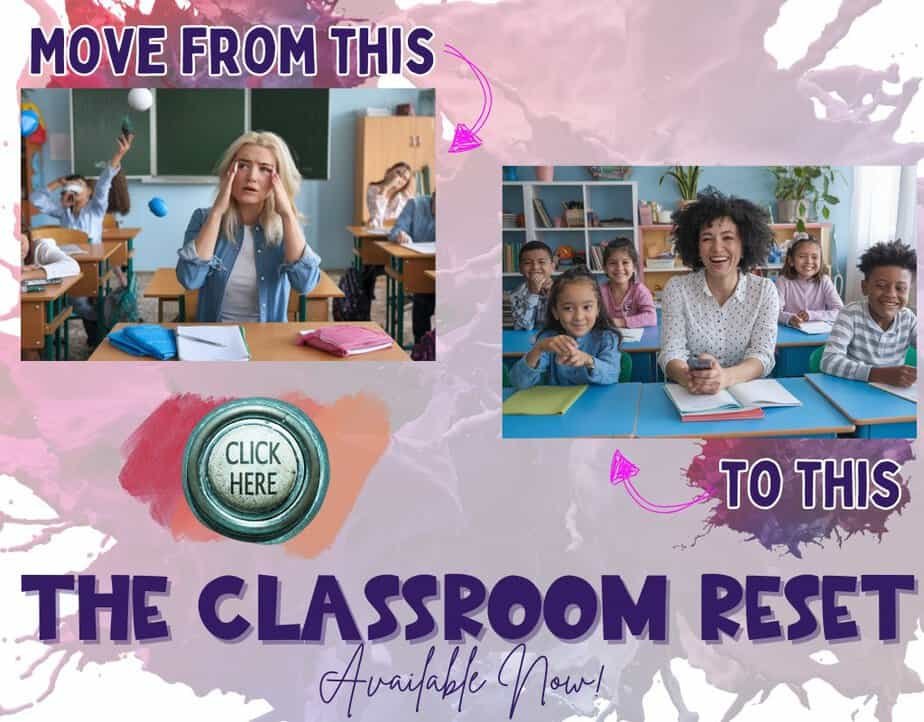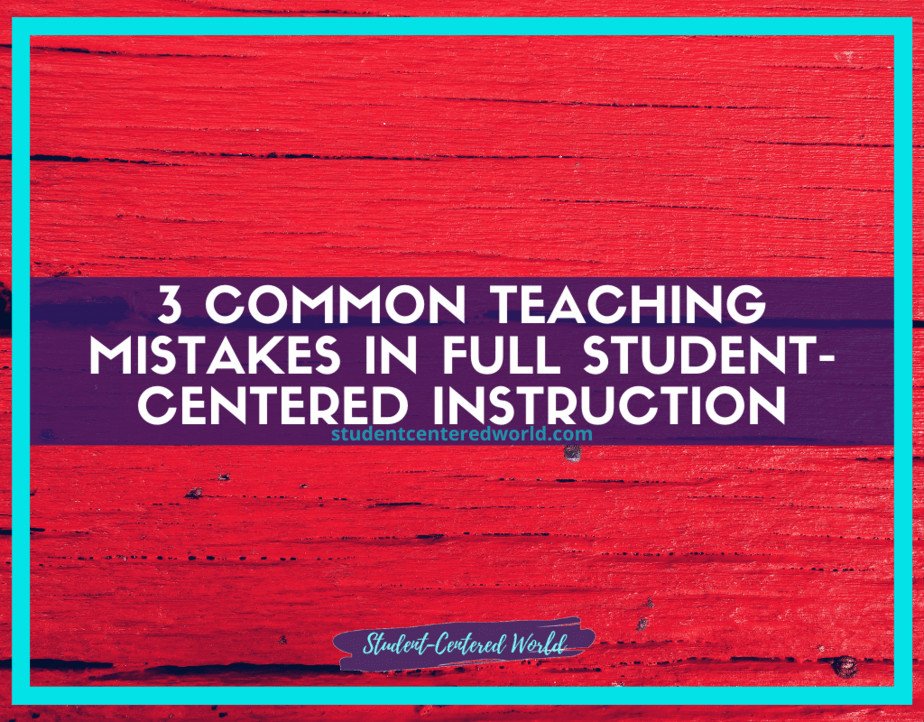Examples of Student-Centered Learning Strategies & Teaching
For some teachers, transitioning to a student-centered classroom can be challenging. Many educators were taught in a teacher-centered classroom, where direct instruction was the norm. When introduced to concepts like learner-centered education or student-centered instruction, it can be difficult to envision how these approaches work in practice and what some examples of student-centered learning would even look like. Teachers often ask for tangible student-centered learning examples to better understand how to implement these strategies in their classrooms.
Why Student-Centered Learning Matters
Student-centered learning has been shown to benefit all students, particularly those who are shy or introverted. Research indicates that men, in particular, experience higher levels of engagement and success in student-centered learning environments. This approach aligns well with modern educational initiatives like No Child Left Behind, which emphasize accountability for student success. By fostering a deeper understanding of the subject matter, student-centered approaches help ensure that students meet curriculum standards while developing critical thinking and communication skills.
In recent years, there has been a shift toward student-centered learning strategies that prioritize student engagement and ownership of their learning. This approach contrasts with the more traditional approach of teacher-centered learning, where the teacher is the primary source of knowledge. Instead, student-centered teaching encourages students to take an active role in their learning journey, allowing them to work at their own pace and pursue their own goals.

Differentiated Instruction is a cornerstone of student-centered learning, allowing teachers to tailor their teaching methods to meet the diverse needs of their students. In this approach, educators provide extra support for struggling learners while offering advanced challenges for those who excel. By addressing individual needs, teachers ensure that every student has the opportunity to succeed.
For example, a teacher might use flexible seating arrangements to create small groups for targeted instruction or provide alternative resources, such as video-based lessons, to help students grasp difficult concepts. This personalized approach not only helps students master the subject matter but also fosters a sense of confidence and independence in their learning journey.
Student Motivation is another critical aspect of student-centered learning. When students have a say in their education, they are more likely to be motivated and engaged. Allowing student choice in topics, projects, and even assessment methods can significantly increase students’ motivation and make learning more enjoyable. For instance, instead of assigning a standard essay, a teacher might let students choose between writing a paper, creating a video, or designing a presentation. This flexibility empowers students to take ownership of their learning and explore topics that genuinely interest them, leading to deeper engagement and a more meaningful learning experience.
Building Strong Relationships is a natural outcome of a student-centered classroom. By showing genuine interest in students’ ideas, experiences, and students’ interests, teachers create a supportive environment where learners feel valued and respected. This sense of belonging encourages students to take risks, share their perspectives, and participate more actively in class discussions and activities. Strong relationships between students and teachers also foster trust, making it easier for students to seek help when needed and for teachers to provide the guidance and encouragement that help students thrive.
The long-term benefits of student-centered learning extend far beyond the classroom. The skills developed through this approach—such as critical thinking, problem-solving, and collaboration—are essential for success in the real world. By focusing on these skills, educators prepare students not just for academic achievement but for life beyond school. Whether it’s navigating complex challenges, working effectively in teams, or thinking creatively to solve problems, the competencies gained through student-centered learning equip students with the tools they need to succeed in higher education, careers, and everyday life. Ultimately, this approach helps students become confident, capable, and lifelong learners.
Key Strategies for Student-Centered Learning
Inquiry-Based Learning and Discovery Learning
In a student-centered classroom, students are often challenged with questions rather than being given direct answers. This inquiry-based learning approach encourages students to explore topics independently, fostering critical thinking and a deeper understanding of the subject area. For example, instead of presenting facts, a teacher might ask students to come up with their own examples or solutions, promoting active learning and problem-based learning.
Collaborative Learning and Group Work
Group projects and collaborative projects are central to student-centered learning. By working in small groups, students can share ideas, build strong relationships, and learn from one another. This method is particularly effective for engaging students and encouraging them to take ownership of their learning. For instance, students might collaborate on research projects or real-world problem-solving tasks, which helps them develop new skills and apply their knowledge in meaningful ways.
Experiential Learning and Project-Based Learning
Project-based learning is a hallmark of student-centered instruction. Students are tasked with creating something that demonstrates their understanding of a concept, often using real-world examples. This approach not only reinforces the subject matter but also teaches students how to approach problems from different perspectives. For example, students might design a solution to a community issue or create a model that explains a scientific concept.

Flexible Seating and Classroom Environment
A student-centered learning environment often includes flexible seating arrangements that encourage collaboration and comfort. This setup helps create a school environment where students feel empowered to take risks and participate actively. By moving away from the teacher-centered model, where the teacher is the focal point, classrooms become spaces where learning flows naturally among students.
Student Choice and Voice
Allowing students to make choices about their learning is a key component of student-centered approaches. Whether it’s selecting topics for independent research, choosing group work partners, or deciding how to present their findings, student choice fosters motivation and engagement. Additionally, incorporating student voice into the classroom ensures that learners feel valued and heard, which is essential for building strong relationships and a positive school environment.
Formative Assessments and Mastery-Based Learning
Formative assessments are integral to student-centered learning, as they provide ongoing feedback and help teachers tailor instruction to individual needs. By focusing on mastery rather than grades, students are encouraged to take risks and learn from their mistakes. This approach aligns with universal design principles, ensuring that all students, including those with special needs, have access to the support they need to succeed.
Technology Integration
Using technology effectively can enhance student-centered learning. Tools like video-based lessons, online research platforms, and collaborative software enable students to explore topics independently and at their own pace. For example, students might use technology to create presentations, conduct independent research, or collaborate on group projects.
Independent Work and Self-Directed Learning
Independent work is a cornerstone of student-centered learning. Students are encouraged to take charge of their learning journey by setting goals, managing their time, and seeking out resources. This approach is particularly effective for higher education and high schools, where students are expected to take more responsibility for their learning. For younger students in primary schools, teachers can provide scaffolding and extra support to help them develop these skills.
Class Discussions and Active Participation
In a student-centered classroom, class discussions are often student-led, with the teacher acting as a facilitator rather than the sole authority. This approach encourages students to think critically, share their perspectives, and learn from one another. By creating a space where students feel comfortable contributing, teachers can foster a culture of active participation and student engagement.
Creative Expression and Student-Created Content
Allowing students to create their own examples, presentations, or projects is a powerful way to promote student-centered learning. Whether it’s through creative expression, student work, or collaborative learning, this approach empowers students to take ownership of their education. For example, students might create video-based lessons, design charts, or develop research projects that align with their students’ interests.
Examples of Student-Centered Learning in Action
- Presentation of Knowledge: Instead of passively receiving information, students actively present their findings to the class. This could involve creating group projects, delivering video-based lessons, or designing student-centered learning examples that demonstrate their understanding.
- Class Discussion: Students lead discussions on topics of interest, with the teacher guiding the conversation to ensure it stays on track. This method encourages critical thinking and helps students develop communication skills.
- Independent Research: Students choose topics that interest them and conduct independent research, using resources like books, online articles, and real-world examples. This approach fosters inquiry-based learning and helps students develop new skills.
- Project-Based Learning: Students work on collaborative projects that require them to solve problems, create models, or develop solutions. This method encourages active learning and helps students apply their knowledge in meaningful ways.
- Group Collaboration: Students work together in small groups to explore topics, share ideas, and create presentations. This approach promotes cooperative learning and helps students build strong relationships with their peers.
- Real-World Applications: One of the best ways to engage students is by connecting lessons to real-world scenarios. For example, in a science class, students might study environmental issues and propose solutions that could be implemented in their community. This not only makes learning more relevant but also helps students see the value of their education beyond the classroom.
The Teacher’s Role in a Student-Centered Classroom
In a student-centered learning environment, the teacher’s role shifts from being the primary source of knowledge to a facilitator of learning. Teachers guide students through their learning journey, providing support, feedback, and resources as needed. By adopting instructional strategies that prioritize student engagement and ownership of their learning, teachers can create a classroom where students thrive. This shift requires educators to rethink their teaching methods and embrace a more flexible, adaptive approach. Instead of delivering lectures, teachers might spend class time circulating the room, offering guidance, and encouraging students to explore topics independently or in small groups.

The teacher becomes a coach, helping students navigate challenges and celebrate successes. This approach also involves using formative assessments to monitor progress and adjust instruction to meet individual needs. For example, if a student struggles with a concept, the teacher might provide extra support or suggest alternative resources. Conversely, if a student excels, the teacher can offer more advanced challenges to keep them engaged.
Additionally, teachers in a student-centered classroom foster a culture of collaboration and curiosity. They encourage students to ask questions, share ideas, and take risks. By creating a safe and supportive environment, teachers help students build confidence and develop a love for learning. This approach not only enhances academic achievement but also prepares students for the real world, where critical thinking, problem-solving, and communication skills are essential. Ultimately, the teacher’s role in a student-centered learning environment is to empower students to take charge of their education and become lifelong learners.
Conclusion
Student-centered learning represents a significant shift in education, moving away from the teacher-centered model and toward a more learner-centered approach. By incorporating strategies like inquiry-based learning, collaborative learning, and project-based learning, teachers can create a student-centered learning environment that fosters critical thinking, communication skills, and a deeper understanding of the subject matter. Whether in primary schools, high schools, or higher education, these approaches help students become active participants in their education, preparing them for success in the real world.
By embracing student-centered teaching, educators can ensure that their classrooms are spaces where students feel empowered, engaged, and excited to learn. As John Dewey once said, education is not preparation for life; education is life itself. Through student-centered learning, we can make that life a rich and fulfilling experience for every student.
Student-centered learning is not just a teaching method; it’s a philosophy that places students at the center of the learning process. By embracing this approach, educators can create dynamic, engaging, and effective learning environments that prepare students for the challenges and opportunities of the future.








One Comment
Cheryl Lee Bouchez
Student-centered learning remains inspiring and motivating for teachers, too. At last…creating students who want to learn and actually enjoy learning. What a concept!